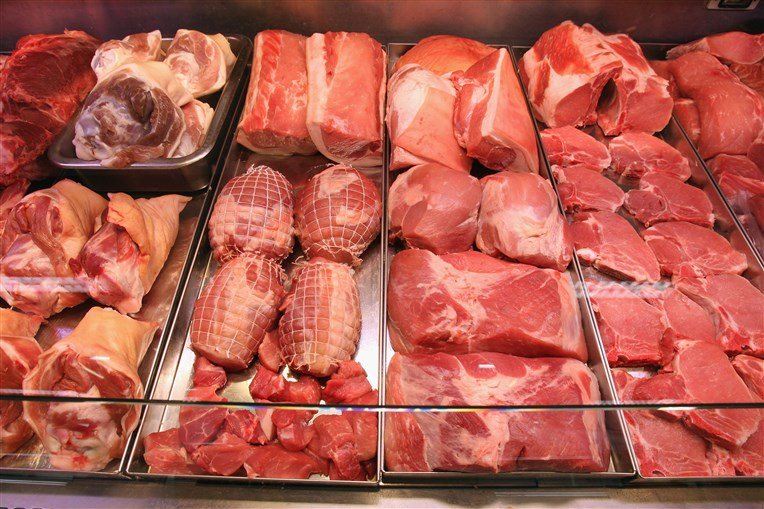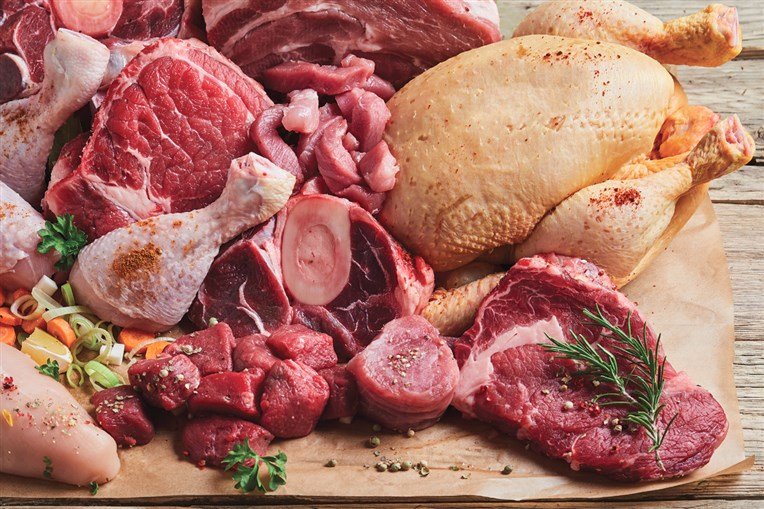How good are pork neck steaks and chops in stores? Which providers are committed to the welfare of the pigs? How are workers doing in the slaughterhouses? The Stiftung Warentest tested all these aspects for 15 pork products, including inexpensive ones from the discounter and more expensive organic steaks. Conclusion: The quality of the meat is often good, but many suppliers do not use their market power to improve animal welfare and working conditions.
This is what the pork test from Stiftung Warentest offers
Test results for meat quality and animal welfare. A table shows ratings for the meat quality of 15 neck steaks and chops, four of which are organic products (prices per kilo: 5.70 to 19.19 euros). Mainly retail brands such as Lidl Landjunker, Meine Metzgerei (Aldi North and South), Gut & Cheap (Edeka), Wilhelm Brandenburg (Rewe) or Königshofer (organic supermarket chain Denn’s) were tested. A second table shows the state of animal welfare in the stables and the working conditions in the slaughterhouses. Two products performed well in both the product test and the CSR test.Background. We describe what we experienced during our research in animal stalls and slaughterhouses. We provide facts about antibiotic-resistant germs, the “way of keeping” concept of the trade and explain animal-friendly concepts such as the open stable initiative.
Booklet. If you activate the topic, you will have access to a PDF with the two test reports from test 7/2020.
Pork: juicy enjoyment, poor production conditions
Opinions are divided on pork: some love it because at best it tastes juicy and aromatic. Others are spoiled by reports of factory farming and exploitative work in slaughterhouses. Using the example of 15 neck steaks and chops, Stiftung Warentest examined both the quality of the meat and the suppliers’ commitment to animals, workers and the environment – in other words: corporate social responsibility (CSR). Conclusion: There are products that were able to convince in both tests.
Corona infections in the slaughterhouse
Visit before the corona pandemic. Since the coronavirus has been rampant among slaughterhouse workers, their work and living conditions have been the focus. The virus has an easy time of it with them: Many live in shared accommodation, are driven to work in buses, work closely together on the assembly line, where there are cool temperatures that encourage the virus to spread. We visited the slaughterhouses in winter 2020 – shortly before the first slaughterhouses reported corona infections and had to close temporarily.Current case of Tönnies. The latest development in the main factory of industry leader Tönnies is particularly dramatic: More than 1,500 employees have now tested positive for the coronavirus. Many of them are Eastern European workers. We also visited this plant. Our conclusion: Like other slaughterhouses in the test, Tönnies shifts a large part of its social responsibility to subcontractors. We only had limited access to documents, for example to check the hours actually worked. Tönnies also often leaves the accommodation of the workers to other positions.

Does the type of husbandry have an influence on the quality of the meat?
Since April 2019, many traders have been providing voluntary information about the keeping conditions for the animals from which the meat comes. Their uniform, four-stage labeling system is called “keeping form” (see also our message animal welfare label). Level 1 stands for the legal standard, level 4 for organic production. Our test shows whether the type of housing has an influence on the quality of the meat.
This is how we tested the quality of the meat
We checked the neck steaks and chops intensively: for pollutants, residues of antibiotics, pathogens such as salmonella and antibiotic-resistant germs such as MRSA and ESBL formers. We detected antibiotic-resistant germs in ten products. The germs in the steak do not represent an acute danger for people, but they do pose a risk. We asked an expert about this. One vendor’s steaks were noticeably contaminated with spoilage germs. Although the amount is harmless to health, it can indicate weaknesses in hygiene management. When tasting the meat, we also noticed differences in taste and consistency.
Pork. Some facts
6 months
many animals are old when slaughtered. You could live about 10 years.34 kg
In 2019, people in Germany ate pork per capita on average.55 million
Pigs were slaughtered in Germany in 2019, almost 151,000 per day.95 kilograms
is the average slaughter weight of a fattening pig.45 percent
of the pork we produce was exported in 2018, primarily to Italy and China.1 percent
of the fattening pigs in Germany are organic pigs.Sources: Federal Information Center for Agriculture, Federal Agency for Agriculture and Food, Federal Statistical Office, Thünen Institute, Agricultural Market Information Society
Precarious working conditions for slaughterhouse workers</strong
For our CSR test, twelve farmers showed us their stables and seven slaughterhouses showed us their production. Among them was the main factory of the industry leader Tönnies in Rheda-Wiedenbrück, where 20,000 pigs are slaughtered every day. The research showed that meat producers often shift their social responsibility to subcontractors. Only one slaughterhouse being tested already works with permanent workers and also provides apartments. According to the will of the federal government, from January 1, 2021, only employees of the company’s own company should be allowed to slaughter and process. That will change the structures of the industry significantly.
Edeka and Netto Marken-Discount are stonewalling
Almost all large retail chains disclosed their suppliers. But Germany’s largest grocer, Edeka, refused to provide information about its suppliers and those of its subsidiary Netto Marken-Discount. In both cases, the CSR verdict is: Poor. Provider Edeka missed the chance to prove how it uses its market power.
Pigs lead a bleak existence in cramped stables
The life of many fattening pigs is bleak, as our test shows. Most animals spend their short lives in closed stalls with small windows. Many providers are satisfied with that. Your suppliers have to adhere to little more than the meager legal standard. That says: For a pig weighing up to 110 kilograms, 0.75 square meters is enough in the barn, access to fresh air is not required. The docking of tails and the neutering of male piglets without anesthesia are still not entirely prohibited. Consumers who care about animal welfare should prefer meat from animals that have had access to fresh air, freedom of movement and things to do with things like hay.
Our test criteria: a selection
Animal welfare: How do pigs live during fattening? Are they lying on concrete or straw? Are you getting some fresh air? What do providers ask of their suppliers? Do they influence the posture? How is the suffering of animals reduced during slaughter?Working conditions: What contracts do slaughterhouses negotiate with subcontractors in order to obtain labor? What do the workers earn? Is overtime a problem?
Environmental protection: Do companies work in an environmentally friendly way? Are measures implemented that help protect the environment and save energy and CO2?
How the pigs are kept: Litter can be straw, wood chips, sand or peat. Open front barn means: one side of the barn is open. Slatted floors are hard concrete floors with openings for the excrement. Outside climate means that the animals can stay in the fresh air.
